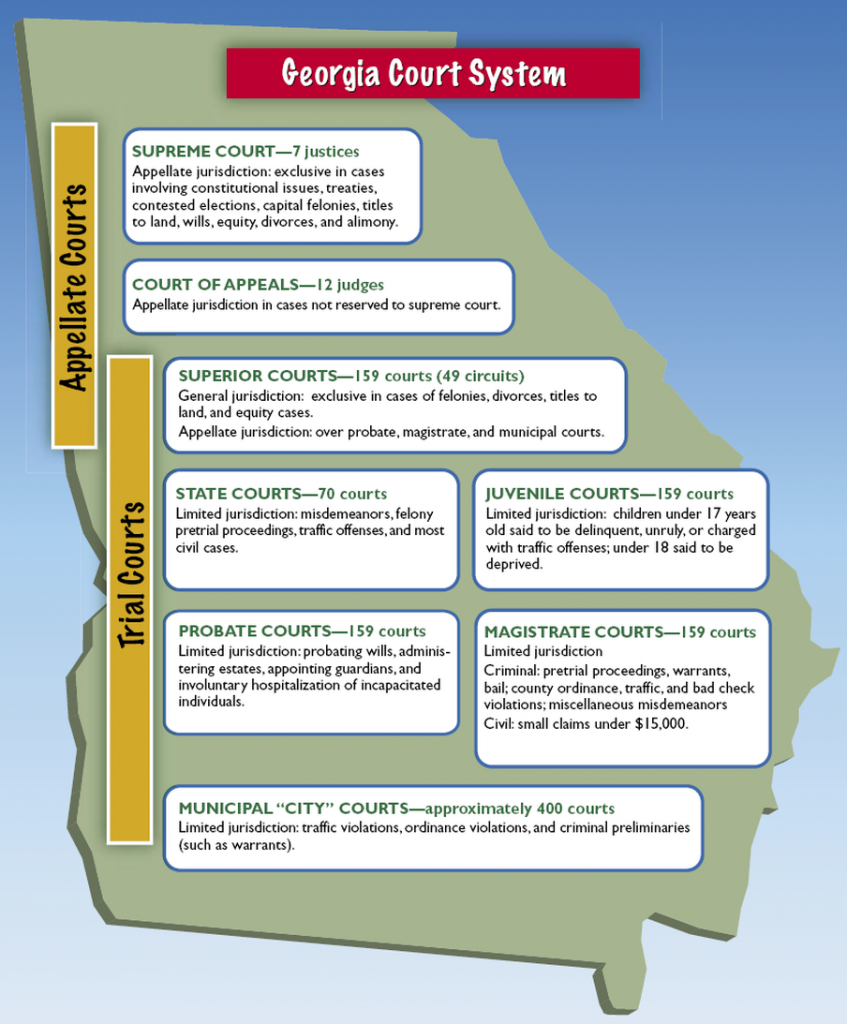Types of Court Cases
Published (updated: ).

Depending on the legal procedure or who is pressing charges be it a police officer or district attorney because if a law was broken, a criminal court would preside at the trial. If a person wants to sue someone else in the hopes they will receive an award for damages from the court, the suit would be heart in a civil court. What type of court someone goes to depends on why the legal case is being pursued in the first place. In other words, the actual courtroom (including the judge/jury) is determined by the type of case (civil vs criminal) and the where the infraction occurred (jurisdiction). A DUI case would never be discussed in a civil court because a crime has been committed, and crimes are heard in criminal court.

Situations Where EMS Providers Could Find Themselves Sitting In A Courtroom
If an EMS crew leaves their patient before the patients’ problem is resolved or the patient is transported without the patients consent (a refusal or some other acknowledgement that the patient knows they are on their own after EMS has left), the EMS crew could be guilty of abandonment. In order to prove abandonment, one (usually an attorney) would have to prove 4 things:
- First, the EMS-patient relationship must be established. This means that the EMS crew must have agreed to treat the patient, and treatment must be underway.
- Second, the abandonment must take place when the patient is still in need of medical attention — this is known as a “critical stage” of the treatment process.
- Third, the abandonment must have taken place so abruptly that the patient did not have enough time or resources to find a suitable alternative to take over treatment.
- Finally, the patient must suffer an injury as a direct result of the patient abandonment.
Standard of care is defined as the level of care that the average, prudent provider in a given community would practice. It is how similarly qualified practitioners would have managed the patient’s care under the same or similar circumstances. The medical malpractice plaintiff must establish the appropriate standard of care and demonstrate that the standard of care has been breached. In order to establish a standard of care, an ‘expert witness’ would be called upon to testify and define what the standard of care would mean in a given situation.
If an EMS crew fails to follow the standard of care, they could be guilty of negligence.
Most medical malpractice cases proceed under the theory that a medical professional was negligent in treating the patient. To establish medical negligence, an injured patient, the plaintiff, must prove:
- The existence of a duty owed by the health care professional to the plaintiff (for example, a doctor/patient relationship); in EMS, it would be have to be proven that the EMS crew had a duty to act (due to response territory or other situation where the crew had some responsibility to do something.
- The applicable standard of care, and the health care professional’s deviation from that standard, which is a breach of the duty owed the patient.
- A causal connection between the health care professional’s deviation from the standard of care and the patient’s injury.
- Injury to the patient that is due to the negligence. For instance, if the patient died of cancer after the EMS crew dropped the patient, the patients’ death could not be due to being dropped by the EMS crew.
To find a medical professional negligent, it must be shown that his or her conduct fell below a generally accepted standard of medical care. To establish the standard to be applied, a plaintiff (the party making the claim, filing the suit, or charging with a crime) must present the testimony of another medical expert, qualified in the same area of medicine as the defendant (the person against whom is a claim, suit, or criminal charge), indicating what standard, or level of care, is commonly met by those recognized in the profession as being competent and qualified to practice. The plaintiff will have to present expert testimony not only as to this standard of care, but also show the defendant failed to meet this standard.
Back to consent. If the EMS crew touched the patient without their consent with the intent of harming the patient, they could be criminally charged with the crime of battery. If any harm actually occurred from the battery, they could be found guilty of assault. If found guilty, they could serve a prison sentence. If the EMS crew threatened to touch the patient without consent, they could be charged with battery. Assault and battery exists in both the tort law (civil law) context and the criminal law context. In an act of physical violence, assault refers to the act which causes the victim to comprehend imminent physical harm, while battery refers to the actual act causing the physical harm.

EMS could be called upon to testify what was seen at a crime scene. EMS personnel routinely (and unintentionally) taint crime scenes. The job of EMS is to assess and treat the patient. Just the steps needed to determine the patient is dead or not a candidate for resuscitation could taint the crime scene. If the patient is alive, it is expected that EMS will do what is necessary to get the patient to the hospital alive without regards to the crime scene. If the patient is dead, and no further care is needed, EMS should back out the scene as carefully as possible to avoid tainting the crime scene. If there is anything that will taint a crime scene is cutting through holes in clothing. EMS should expect the police to cordon off the crime scene and be present with the patient at all times (to preserve the ‘chain of evidence’). The EMS crew should document anything that was unusual at the scene. The EMS crew should fully expect to get a subpoena (an order to appear before the court to testify) to describe what they saw at the scene.
